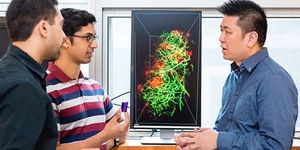When researchers examined human postmortem brain tissue—some from typical brains and others from those with an autism diagnosis—they found evidence of changes to blood vessels in autistic brains.
“Our findings show that those afflicted with autism have unstable blood vessels, disrupting proper delivery of blood to the brain,” explains Efrain Azmitia, a biology professor at New York University and senior author of the study published in the
Journal of Autism and Developmental Disorders.
“In a typical brain, blood vessels are stable, thereby ensuring a stable distribution of blood,” adds Azmitia. “Whereas in the autism brain, the cellular structure of blood vessels continually fluctuates, which results in circulation that is fluctuating and, ultimately, neurologically limiting.”
Azmitia and colleagues uncovered angiogenesis—the creation of new blood vessels—in the autistic brain tissue, but not in that of typical brains. The distinction is a significant one—evidence of angiogenesis indicates that these vessels are repeatedly being formed and in constant flux, underscoring an instability in the blood’s delivery mechanism.
Specifically, in autistic brains, they found increased levels of the proteins nestin and CD34—molecular markers of angiogenesis—compared to typical brains.
“We found that angiogenesis is correlated with more neurogenesis in other brain diseases, therefore there is the possibility that a change in brain vasculature in autism means a change in cell proliferation or maturation, or survival, and brain plasticity in general. These changes could potentially affect brain networks,” says Maura Boldrini, a research scientist in psychiatry department at Columbia University and a study coauthor.
“It’s clear that there are changes in brain vascularization in autistic individuals from two to 20 years that are not seen in normally developing individuals past the age of two years,” says Azmitia. “Now that we know this, we have new ways of looking at this disorder and, hopefully with this new knowledge, novel and more effective ways to address it.”
Grants from NYU UCRF, the National Institutes of Health, the New York Stem Cell Initiative, the Diane Goldberg Foundation, the American Foundation for Suicide Prevention, and the Brain and Behavior Research Foundation supported the work.
Other researchers from NYU and Stony Brook University contributed to the study.
Source:
NYU
This article was originally published on
Futurity.org.









